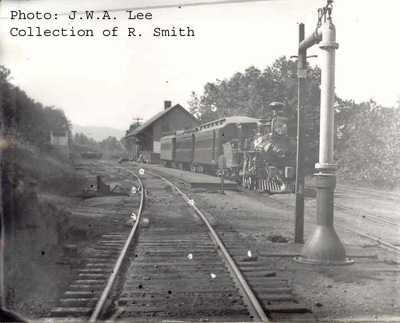Metro Gathering Mega Event Poker Run #1
The Sussex Mine Railroad cache along the Sussex Branch Trail showcases one of the premier rail trails in the Skylands regions of NJ. Formerly the Sussex Branch of the Delaware, Lackawanna, and Western railroad, this line is steeped in history as well as remarkable scenery. With only a few short interruptions, it is possible to trace this abandonment over twenty miles between the towns of Netcong and Branchville. This section of the Sussex Branch Trail follows the route through Sussex County from Byram Township in the south to Branchville Borough.
This section of the Sussex Branch Trail also got its start providing service in 1848 as the narrow-gauge, mule-drawn Sussex Mine Railroad, whose primary purpose was hauling iron ore from the mines in Andover to Waterloo Village on the Morris Canal. The railroad was eventually upgraded and expanded before being merged into the Delaware, Lackawanna and Western Railroad in the mid-1940s. Though the railroad was out of service several decades later, the state of New Jersey—which owns much of the area parkland—preserved the right-of-way for trail use.
 "Waterloo Station"
"Waterloo Station"
Waterloo's wood frame station was built in 1854, when the connection was made with the Morris & Essex. At this time the Sussex Railroad built a bridge over Inclined Plane #4 West at Waterloo when the railroad was first built in 1854. This bridge was replaced in 1877. The railroad bridge across the roadway (Taylor Road) was replaced in 1878-79.
 "Waterloo Station"
"Waterloo Station"
According to a local historian, the cut stone from the abutments for this roadway bridge, standing near the water outlet from the canal power house, was used to repair the tumbling vent in the Lock Pond dam at Waterloo in 1980.
 Waterloo Station
Waterloo Station
A large new water tank was built at Waterloo in 1881.
On September 1, 1890, the boiler of a Delaware, Lackawanna & Western locomotive named the Morris exploded at 2:05 P. M. while standing on the upper track at Waterloo, waiting for the Sussex Railroad passengers on the 1:30 mail train from Newton to board. Though many people were standing on the platform, no one was seriously injured, despite the heavy rain of shrapnel. The 400-pound cast-iron sand box on top of the boiler shot high into the air and came down through the slate roof of the depot, crashing through one floor to lodge in the ceiling above Whitfield N. Gray's ticket office. Some pieces thrown into the air weighed a half ton apiece.
 Waterloo station tower
Waterloo station tower
The bypass from Netcong to the Sussex Branch several miles up the Branch from Waterloo was built in 1901. The turntable (50 footer) was removed soon after 1902, after the 'Stanhope Cutoff' was inaugurated and the Waterloo leg began to be disused as a connection. About half of the track remained in place however, extending from the branch north of Waterloo road, to serve the Mountain Ice Company siding.
The last agent at Waterloo, Clarence Lance, was discontinued in 1922 and the station was later replaced by a smaller shelter.